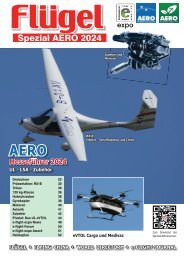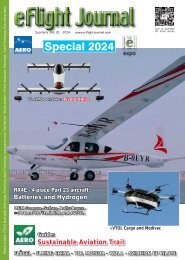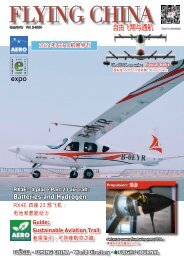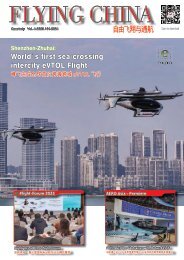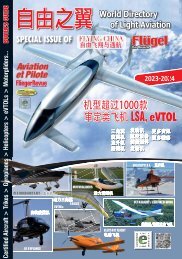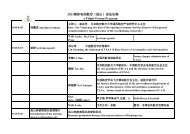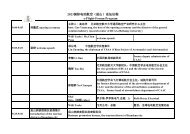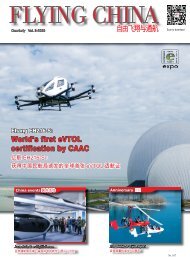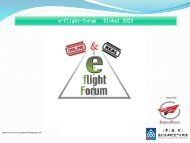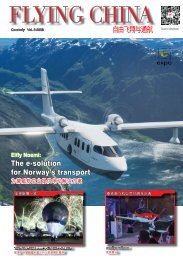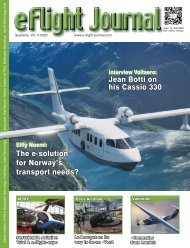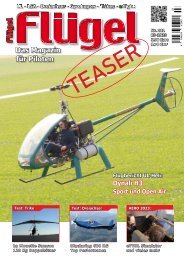You also want an ePaper? Increase the reach of your titles
YUMPU automatically turns print PDFs into web optimized ePapers that Google loves.
Market Watch<br />
The electric Phoenix motor glider<br />
on the e-<strong>flight</strong> Expo in 2014.<br />
developing, testing and commissioning new systems under<br />
clear and feasible conditions. If Phoenix will be certified<br />
also in another category in the future? That is still<br />
subject depending on interest in our offered system.<br />
THE VARIABLE CHARGING SYSTEM FROM BASIC TO<br />
SUPER CHARGER<br />
Pure Flight plans to use three types of power charger<br />
systems to provide a board selection, varying from<br />
2.5KW all the way up to 100kw super charger depending<br />
on the local infrastructure and customer need. The<br />
power connector to the airplane will use three standards:<br />
CHAdeMO, CCS2 for cars and the third standard is a<br />
<strong>special</strong>ly developed connector using the Phoenix Pure<br />
Charger module for aircraft for optimized charging. With<br />
the 100KW super charging system the theoretic charging<br />
time will be about 20 minutes.<br />
At the power input, the charger can be powered from any<br />
source with 3 x 400/230V power from traction lines up<br />
to 1000 V. It may also obtain power from weak power<br />
supplies such as solar panels with battery storage. The<br />
chargers will be fully compatible for automotive directly,<br />
for aircraft using the Phoenix Pure Charger module.<br />
This means that a superfast charger can recharge cars<br />
and aircraft. One charger may have multiple dispensers.<br />
One for cars and the other for airplanes. There are many<br />
power options, charging up to 2 x 500 V and 120 A at<br />
the moment. This is to say that higher charging power is<br />
possible, but the charging system is limited by the current<br />
parameters of the commercial available battery cells.<br />
TRIALS TO BEGIN THIS YEAR IN THE CZECH REPUBLIC<br />
Development and implementation are planned for the<br />
beginning in the Czech Republic in the summer <strong>2018</strong>.<br />
The plan is to install five superfast chargers at selected<br />
airports, but the project team is willing to discuss with<br />
any potential clients who would like to fly cleaner at lower<br />
cost.<br />
Like similar electric airplane projects, <strong>flight</strong> schools have<br />
significant potential interest in such end-to-end electric<br />
airplane solution.<br />
The cost of the system will be divided into two parts, the<br />
airplane and the charger setup. As expected, the purchase<br />
price of electric Phoenix will be higher than the<br />
model with internal combustion engine, but Pure Flight<br />
team claims that the price is going to be competitive due<br />
to its lower building cost. The charging system price will<br />
depend on the selected specification and local conditions.<br />
4<br />
The electric<br />
Phoenix will<br />
use a 60<br />
KW engine<br />
and have<br />
two hours of<br />
<strong>flight</strong> time.<br />
e Flight Journal<br />
35




